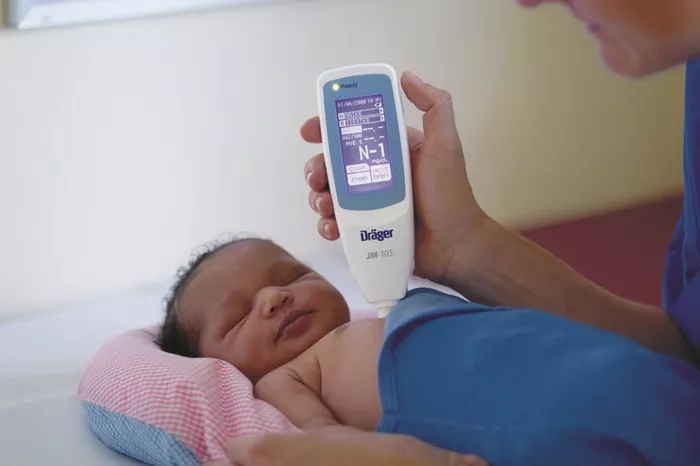Bilirubin is a yellow substance. It is produced when red blood cells break down. In newborns, high bilirubin levels cause jaundice. This condition makes the skin and eyes look yellow. Checking bilirubin levels in newborns is crucial. It helps prevent severe health issues.
Why Newborns Have High Bilirubin
Newborns have more red blood cells than adults. Their liver is not fully developed. This makes it hard for the liver to process bilirubin. Hence, newborns often have higher bilirubin levels. This condition is called neonatal jaundice.
When to Check Bilirubin Levels
Newborns should be checked for jaundice within the first 24 hours of life. It is crucial to check bilirubin levels before leaving the hospital. Early detection prevents complications. Regular follow-up checks are also important.
Methods to Check Bilirubin Levels
There are several methods to check bilirubin levels in newborns. Each method has its advantages and limitations.
1. Visual Assessment
A visual assessment is the simplest method. The healthcare provider looks for yellowing of the skin and eyes. This method is subjective. It is often the first step in identifying jaundice.
2. Transcutaneous Bilirubinometry (TcB)
TcB is a non-invasive method. A device is placed on the newborn’s forehead or chest. The device measures the bilirubin level through the skin. It is quick and painless. TcB is useful for screening but may not be as accurate as blood tests.
3. Blood Test (Serum Bilirubin Test)
A blood test is the most accurate method. A small blood sample is taken from the newborn’s heel. The sample is sent to the lab for analysis. This test measures the exact level of bilirubin in the blood. It is used to confirm high bilirubin levels detected by other methods.
SEE ALSO: How Can I Lower My Bilirubin Quickly?
Steps to Perform a Blood Test for Bilirubin
Performing a blood test involves several steps. Each step ensures the accuracy and safety of the procedure.
Step 1: Preparing the Equipment
Gather all necessary equipment. This includes a lancet, alcohol swabs, gauze, and a collection tube. Ensure that all items are sterile and within reach.
Step 2: Preparing the Newborn
Clean the newborn’s heel with an alcohol swab. Allow the heel to dry. This reduces the risk of infection. Ensure the newborn is calm and secure.
Step 3: Collecting the Sample
Use a lancet to make a small puncture in the heel. Gently squeeze the heel to collect blood. Wipe away the first drop with gauze. Collect the blood in the tube.
Step 4: Handling the Sample
Label the sample correctly. Place it in a transport bag. Send it to the laboratory for analysis. Ensure the sample is handled according to protocol.
Interpreting Bilirubin Levels
Bilirubin levels are measured in milligrams per deciliter (mg/dL). Normal levels vary based on the newborn’s age and weight. High levels require immediate attention.
Normal Bilirubin Levels
For newborns less than 24 hours old: less than 6 mg/dL.
For newborns 24 to 48 hours old: less than 10 mg/dL.
For newborns 48 to 72 hours old: less than 12 mg/dL.
For newborns older than 72 hours: less than 15 mg/dL.
High Bilirubin Levels
Levels above 15 mg/dL are considered high. Immediate medical intervention is required. High levels can lead to kernicterus, a serious condition that affects the brain.
Treating High Bilirubin Levels
Several treatments are available for high bilirubin levels. The choice of treatment depends on the bilirubin level and the newborn’s age.
1. Phototherapy
Phototherapy is the most common treatment. The newborn is placed under special blue lights. These lights help break down bilirubin in the skin. The treatment is usually performed in a hospital. It may take several hours to days.
2. Exchange Transfusion
Exchange transfusion is used for very high bilirubin levels. It involves removing small amounts of the newborn’s blood. The blood is then replaced with donor blood. This reduces the bilirubin level quickly.
3. Intravenous Immunoglobulin (IVIg)
IVIg is used if the jaundice is due to blood group incompatibility. It helps reduce the bilirubin level. This treatment is given through a vein.
Preventing High Bilirubin Levels
Prevention is always better than cure. There are several ways to prevent high bilirubin levels in newborns.
1. Early Feeding
Frequent feeding helps reduce bilirubin levels. Breastfeed the newborn 8 to 12 times a day. This helps the baby pass more stool, which removes bilirubin from the body.
2. Monitoring
Regular monitoring of bilirubin levels is crucial. Follow the healthcare provider’s advice. Schedule follow-up visits as recommended.
3. Understanding Risk Factors
Be aware of risk factors for high bilirubin. These include prematurity, bruising during birth, and family history of jaundice. Inform the healthcare provider if any risk factors are present.
Conclusion
Checking bilirubin in newborns is essential. It helps detect and treat jaundice early. Understanding the methods and steps involved is crucial. Regular monitoring and early intervention prevent complications. Follow the healthcare provider’s advice for a healthy start for your newborn.


